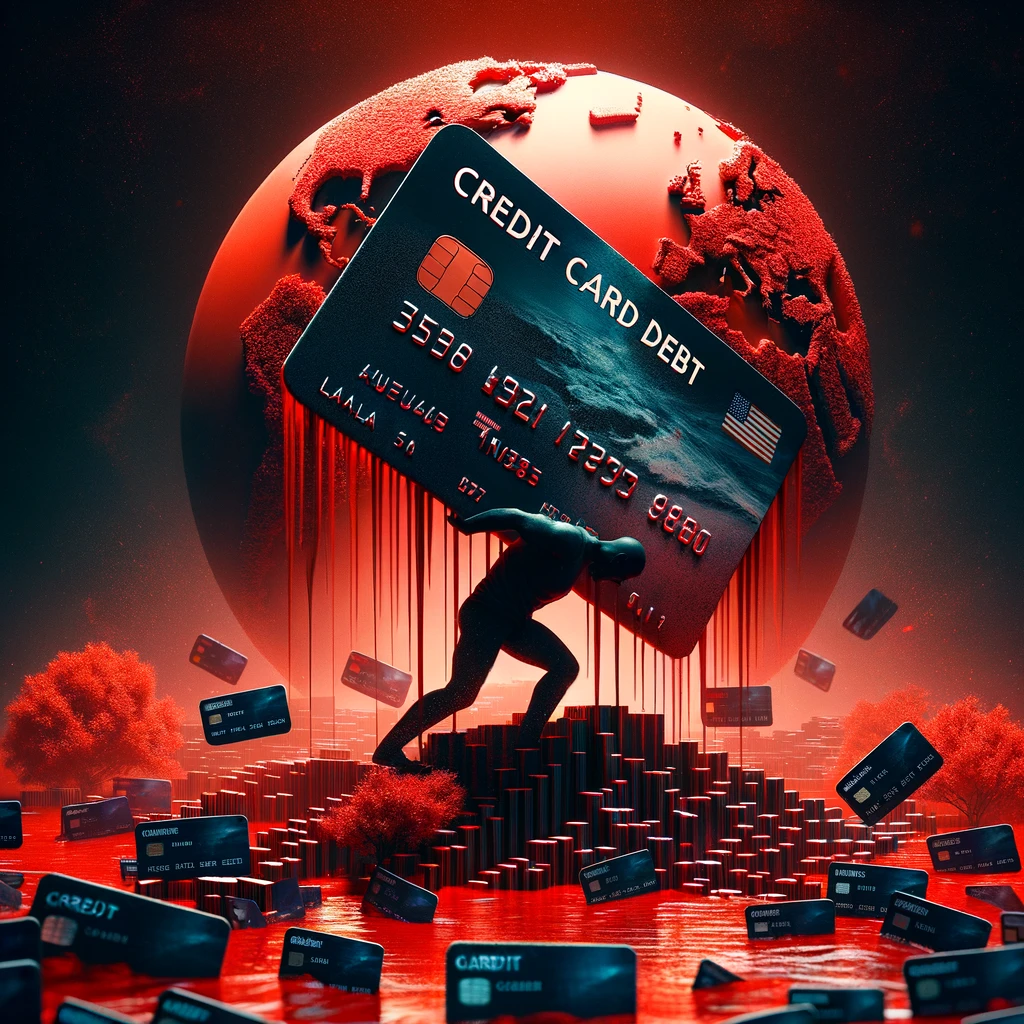Last year, the amount U.S. consumers coughed up for credit card expenses skyrocketed to nearly 50% more than in 2020, the year Joe Biden stepped into office. We got the Republicans shouting from the rooftops, claiming this is the smoking gun of a cost of living crisis under ol Joe’s watch. Meanwhile, credit card interest and fees ballooned by $51 billion, reaching a jaw-dropping $157 billion, as reported by U.S. banks to the Federal Deposit Insurance Corporation. If that doesn’t sound like an economic crisis, I don’t know what does.
Credit Card Costs Skyrocket
Digging deeper, we find that delinquencies on credit card loans are dancing at their highest tune in almost 13 years, per Moody’s. It’s like a twisted ballet where consumers are falling behind, and banks are raking in record profits from credit card lending. As the U.S. Federal Reserve jacked up interest rates to a 23-year peak, lenders saw it as a green light to push consumer borrowing rates even higher.
The Federal Reserve, still playing coy, isn’t expected to cut rates until this summer. In the political arena, Republicans are using credit card debt as Exhibit A of how Biden’s economic playbook has backfired on low-income Americans. The Biden administration, on the defensive, is attempting to reign in credit card companies with huge fees.
Amidst this, polls show Americans are far from bullish about the economy under Biden, despite a buoyant stock market, robust GDP growth, and low unemployment. The sentiment is downright bleak, with half of the population feeling worse off than under Donald Trump, whose economic policies now seem like a distant dream. Ha!
A Deeper Dive into the Debt Dilemma
I’m gonna peel back another layer. Americans have been on a credit card binge, accumulating a record $1.13 trillion in debt. This debt growth is one of the fastest in over two decades, yet, ironically, it’s still not as bad as during the financial crisis in real terms. But despite rising incomes making this debt more manageable, many Americans are stretched thin, struggling to keep up with the rising costs of basic life needs.
The face of this debt varies widely across demographics and regions. A Federal Reserve study revealed that credit card ownership hits low-income earners the hardest, with minorities more likely to carry a balance. Millennials, particularly those juggling auto or student loans, are leading the charge in rising delinquencies. States like Louisiana, Mississippi, and Oklahoma are in a chokehold with credit-card-debt-to-median-income ratios rising above 10%.
Credit card companies have been piling on, widening their margins to record levels. Though banks have been spared the brunt of losses for now, the ticking time bomb of rising delinquency rates could spell trouble on the horizon. And yet, banks have never had it better, posting record profits from credit card loans.
About half of consumer debt is concentrated in the hands of four major banks, with smaller banks offering slightly less oppressive rates. But, this doesn’t detract from the overarching problem, which is that majority of the U.S. population is caught in a vicious cycle of debt, contributing to the gloomy outlook on the economy.
But to be completely honest, guys, credit cards are not the villain in the grand scheme of the U.S. economy. Yes, they are a thorn in the side for a significant portion of Americans. In an economy where wages are rising and unemployment is scraping record lows, the issue of credit card debt is more a symptom of deeper economic disparities than the root cause of economic discontent.





